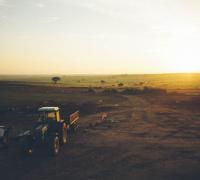Large-scale agricultural investments, land use and land cover change in Uganda
Abstract
Agriculture is one of Uganda’s key growth sectors aimed at achieving socio-economic transformation and middle income status by 2040. This strategy has attracted Ugandan and foreign investors to the sector resulting in land use and land cover change. The investments have exerted pressure on agricultural land including those considered nonarable and kindled land use and land cover changes in Kanungu, Nakasongola and Nwoya districts. Lack of data on such changes hampers interventions to mitigate the negative effects that affect land productivity, food and nutrition security as well as household livelihoods. In this regard, we examined the effects of large-scale agricultural investments (LSAI) on land use and land cover changes from 2000 – 2020 in the three districts. An exploratory research design involving mixed methods enabled data collection. Land use land cover changes were examined using LandSat ETM7 of 2000 and Sentinel2 images of 2020 complemented by questionnaire survey and key informant interviews conducted in 2018 and 2019. The images were processed, verified and assessed for accuracy and land use land cover changes displayed in Sankey diagrams. Results revealed that by 2020, LSAI accounted for land use and land cover change of 6.4% in Nwoya, 7.9% in Kanungu and 1.7% in Nakasongola districts; while grasslands, bushlands and woodlands declined. LSAI and related activities like increased built up areas created spatial changes in the distribution and pattern of land use and cover types.

